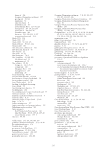6 – Developing the desert – potential effects on wildlife 67 Fig. 6.2. Small mammals such as this spinifex hopping-mouse (Notomys alexis) live in the sand dune habitats of the Simpson Desert, feeding on seeds, and go through boom and bust phases that coincide with productive rainfall and dry periods, respectively (photo, A. C. Greenville). Fig. 6.3. Brush-tailed mulgaras (Dasycercus blythi) are predators, feeding on invertebrates, rodents and other small vertebrates, living in the sand dune habitats of the Simpson Desert. Similar to native rodents, mulgara populations go through boom and bust phases that coincide with productive rainfall and dry periods, respectively (photo, A. C. Greenville).
Downloaded from CSIRO with access from at 216.73.216.88 on Nov 13, 2025, 2:31 AM. (c) CSIRO Publishing

















































































































































































































































































